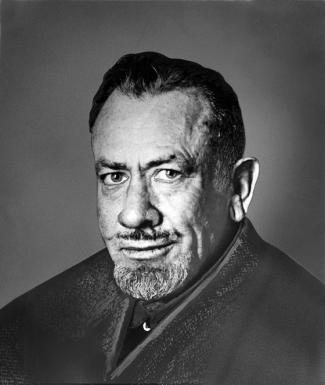Novel, 19th and 20th century
Aus der episodenhaften Form des frühen englischen Romans mit noch typisierten Charakteren entwickelte sich im 19. Jh. der Roman mit einer einheitlichen Handlung (unity of action) und der Darstellung differenzierter Einzelpersönlichkeiten, vor allem in der novel of character. Der Beitrag stellt verschiedene Romantypen vor, die sich während des 19. Jh. herausbildeten: Fortsetzungsroman (serial novel), historischer Roman (historical novel), Gesellschaftsroman (social novel), realistischer Roman (realist novel) und naturalistischer Roman (naturalist novel).
Novels of the 19th and 20th century
Focus on the Characters
During the 19th century the English novel of character was brought to perfection by JANE AUSTEN (1775–1817, e.g. Sense and Sensibility 1811, Pride and Prejudice 1813), GEORGE ELIOT (Pseudonym of MARY ANNE EVANS, 1819–80) and HENRY JAMES (1843–1916) who are seen as the forerunners of the modern novel. In order to give a more accurate portrayal and subtle analysis of character, the novel of characters favours scenic or dramatic presentation. It focuses on the display and development of the characters.
Focus on the Plot
The type of novel whose main interest lies in the plot may be called the novel of incident. Its aim is to achieve unity of action. Instead of simply talking about a loosely connected sequence of events, the narrator produces a logically connected series of events that serve one intended effect. Each single event is of importance to the others and irreplaceable; exchanging one incident would have consequences for the plot as a whole. The plot in a novel of incident could be compared to the interwoven patterns in a Persian rug.
Forms of Publication
The 19th century novels of incident were produced either for publication in instalments or for serialization in magazines. A monthly instalment would cost one Shilling, and was affordable to a large readership; consequently, those novels (e.g. novels by CHARLES DICKENS or W. M. THACKERAY) became widely known.
Serial novels favoured epic proportions: panoramic and scenic presentation in turn, a number of plots and subplots, an abundance of characters, frequently changing settings and much commenting on the part of the author. During the 19th century this type of novel branched into the historical novel and the social novel.
The Historical Novel
The historical novel is based on characters, events and settings from the past. The most famous English author of historical novels is SIR WALTER SCOTT: Waverley (1805), Ivanhoe (1819). Other historical novels were written by W. M.THACKERAY (Henry Esmond, 1852) and CHARLES DICKENS (Barnaby Rudge 1841, A Tale of Two Cities 1859). A 20th century American example is Gone With The Wind (1936) by MARGARET MITCHELL.
The Social Novel
The social novel illustrates the influence of social and economic conditions on events and characters; it expresses its concern for social injustice and often suggests social reform. Authors of the social novel are:
- CHARLES DICKENS (1812–70): Oliver Twist (1837–38), The Old Curiosity Shop (1841), Bleak House (1852–53), Hard Times (1854), Little Dorrit (1855-57).
- WILLIAM M. THACKERAY (1811–63): Vanity Fair (1847–48).
Middlemarch (1871–72) by GEORGE ELIOT is regarded as one of the greatest social novels. GEORGE ELIOT created an historically accurate and detailed 'study of provincial life' that can almost be considered an historical document of 19th century England. Her novel deals with attempts at social reforms and the resistance to this during a period of social change.
W. M. THACKERAY and GEORGE ELIOT are representatives of realism, attempting to present an accurate reflection of real life. They claimed to avoid the exaggeration and sensationalism for which they criticized CHARLES DICKENS.
Realism in 20th century American literature
JOHN STEINBECK's The Grapes of Wrath (1939) tells the
story of the Joad family, one of thousands of homeless families who migrated from the dust-bowl of Oklahoma to California during the Depression.
Naturalism
The naturalist novel presents human life as being determined by fate, instincts, human drives and natural forces that lie beyond reason and which cannot be controlled by the protagonists. The novels of THOMAS HARDY are examples of this. Due to his background, HARDY (1840–1928) was able to produce some of the most detailed and vivid descriptions of rural life and nature to be found in English literature. His works reflect the process of rural change and the decline of the village community caused by technological progress during the 19th century. Influenced by Darwinian evolutionary theory, he believed man to be inescapably governed by natural forces. This idea of 'cosmic determinism' persuaded HARDY to create images of human beings struggling in vain against fate. His detailed and beautiful descriptions of the natural settings are full of symbolism, either contrasting with or underlining the protagonist's fate.
Famous novels by THOMAS HARDY are:
- Tess of the d'Urbervilles (1891)
- Far From The Madding Crowd (1874)
- The Return of the Native (1878)
- The Mayor of Casterbridge (1886)
- Jude the Obscure (1895).
Examples of naturalism in American literature are STEPHEN CRANE's Maggie: A Girl of the Streets (1892), The Red Badge of Courage (1895) and Theodore Dreiser: Sister Carrie (1900).
-
JOHN STEINBECK (1902 bis 1968)

Suche nach passenden Schlagwörtern
- novel of incident
- Gesellschaftsroman
- Stephen Crane
- W. M. Thackeray
- George Eliot
- novel of character
- naturalism
- Figuren
- Sir Walter Scott
- realism
- historical novel
- social novel
- CHARLES DICKENS
- Handlung
- John Steinbeck
- Theodore Dreiser
- Thomas Hardy
- Historischer Roman
- Realismus
- HENRY JAMES
- Fortsetzungsroman
- Naturalismus

